Cherokee Crossover Sets New Standards
By John Gilbert
WESTLAKE VILLAGE, CALIF. — The new 2014 Jeep Cherokee — an old name with a decidedly new face — raises the level of on-road driveability and fuel efficiency for any vehicle ever to wear the proud Jeep name, without compromising any of its off-road heritage.
The look of the new Cherokee is its most priminent first-impression feature, and it is, in a word, polarizing. Some critics, and a few within the Jeep family, think it goes too far, while others think it’s the best-looking thing Jeep has ever done. There will be few, if any, who will be able to avoid belonging to one extreme camp or the other.
Built of 65 percent high strength steel, the Cherokee allows you to bring three or four people with you and shows off its firm, independent rear suspension climbing rocks or while holding steady as you carve precise cornering lines at highway speed. All the while, it registers up to and beyond the EPA highway estimated 31 miles per gallon.
The new standard MultiAir 2.4-liter TigerShark engine has a city 22 and highway 31 gas mileage EPA figures, an improvement of more than 45 percent over the engine it replaces in the Jeep line. The entirely new 3.2-liter V6 has EPA estimates of 19 city, 28 highway. With both engines, those figures seem conservative. I talked to one engineer who said he drove the V6 on a 200-mile highway trip and got 32.5 miles per gallon, with that number dropping to 28 when he drove much more aggressively on his return.
Jeep’s strongest trademark is its 7-slot grille, and the Cherokee has seven slots, but they have never been shaped so provocatively, with a convex bend near the upper area of the vertical slots, rather than the normal straight slab of slots. The tiny light enclosure that turns the corner on the upper extension of that contoured line adds afurther high-tech touch.
If Jeep officials didn’t decide to resurrect the name Cherokee, they could have called it the “Surprise,” because there’s nothing about the 2014 Jeep Cherokee that is not surprising.
- You could say the appearance is surprising, but that would be a giant understatement, because the dramatically contoured Cherokee looks more like a futuristic concept vehicle than a mainstream vehicle.
- The interior is every bit as surprising as the exterior, with firmly supportive bucket seats, and instrumentation that is straightforward and yet high tech, and everything is covered with high-quality material.
- The engines are surprising, because both the 3.2-liter V6 and the 2.4-liter MultiAir 4 are new, bristling with technical goodies from intake to exhaust, and the transmission is a surprisingly unique unit, too, being the first application of a new ZF 9-speed automatic.
- The trademark Jeep 4-wheel-drive capability is even surprising, with three entirely different choices of systems to choose from, all hooked up to a front-wheel-drive platform instead of the conventional rear-drive layout — the first-ever Jeep to be so designed.
- The Cherokee’s performance on the road is lean and agile, with precise road-holding control even if you drive it like a sports car around curvy 2-lane roadways.
- Such impressive on-road performance begs the question that the new Cherokee must be conceding something from Jeep’s long and proud off-road heritage, but is it? No. Surprisingly, no.
- Even the name is surprising. Sure, Jeep built a vehicle call the Cherokee for decades, but after it grew into the larger and more sophisticated Grand Cherokee, the plain old Cherokee disappeared from the scene. So it’s a bit of an ironic twist that Jeep, which has the Grand Cherokee, the Patriot, the Compass, and the traditional Wrangler, would bring out its newest and most high-tech offering ever, and bring back the long-gone but not forgotten Cherokee name.
Ex-UMD coach Nielson throws scare into Gophers
By John Gilbert
The Minnesota Golden Gophers scored a couple of late touchdowns Saturday to make their 29-12 victory over Western Illinois seem comfortably secure. When it was over, after a brief amount of mingling on the turf at TCF Bank Stadium, both teams headed off toward their respective locker rooms. I had watched from the stands, and after the game I headed down toward the field to try to catch Western Illinois coach Bob Nielson before he got up the walkway.
As I made my way down the staircase to the bottom row of the stands, a Gopher fan who had hustled across in the front row nearly collided with me in his urgency to get to the railing above where the Western Illinois players were departing. I figured a Western Illinois player must be the son of a friend or something, and he was probably hurrying over to catch his attention. I was wrong.
“Hey, Western…Come back any time,” he shouted, with his voice dripping with sarcasm, at the whole Western team as they walked by. By his tone, you’d have thought the Gophers thoroughly wasted Western Illinois, and enjoyed humiliating them.
“I’ll bet you didn’t yell that when it was 12-7, in the third quarter,” I said to him, then walked away as he stopped in silence, possibly embarrassed that a witness had observed his blatant inhospitality.
It had been anything but a humiliating victory. I realize Gopher football fans are so starved for legitimate victories that they can’t resist jumping at the chance to gloat, no matter what the circumstances. But such arrogance is never attractive, even in sports, where rude outbursts from fans have replaced sportsmanship — remember sportsmanship? So I couldn’t pass up the opportunity to respond to his insult.
Downstairs, Nielson was just as smooth as he always was after his UMD teams had played, and usually won. This Gopher game, in fact, was a rare loss for Nielson, who started his chance to coach at the Division I level with two victories before bringing his team to Minneapolis. He talked about how solid Minnesota was, and how proud he was of his players for giving such a strong effort, and for throwing a genuine scare into the Gophers. He had quarterback Trent Norvell and linebacker Kevin Kintzel with him in the interview room — two of the key players who will lead the Fighting Leathernecks through the season.
For the University of Minnesota football team, Western Illinois was just another unknown “cream puff,” scheduled to bolster the Golden Gopher record in hopes of reaching a post-season bowl game. For Western Illinois, the game against the Gophers was a huge challenge, a chance to validate the Fighting Leathernecks intentions of upgrading to full-fledged Division I stature.

Mason Howington was open in the back of the end zone for Trent Norvell’s fourth-down TD pass and a 6-0 lead.
Minnesota won 29-12, if only the result matters. But Western Illinois caused a lot of silence among 42,000 Gopher fans at TCF Bank Stadium for most of three quarters by pretty much harnessing Minnesota from the outset. The Fighting Leathernecks took a 6-0 lead, when Norvell found the big Gopher defensive line impenetrable against the run, and crossed them up with a clutch, fourth-down touchdown pass over the middle to a wide open Mason Howington. Minnesota stormed back and went ahead 7-6 by halftime.
By halftime, starting Minnesota quarterback Phil Nelson had gone down with a bruised hamstring, and Mitch Leidner replaced him and played well, both running and passing the Gophers into the lead. Leidner’s play will force the Gophers to at least play both quarterbacks this weekend against San Jose State. At halftime, Gopher coach Jerry Kill went down with the third or fourth game-time epileptic seizure in the last three years, and he had to be carried off the field and hospitalized. We can’t know how much Western’s competitiveness, Nelson’s injury, or the threat of being the victim of a colossal upset contributed to his anxiety, but it was right out there in public view.
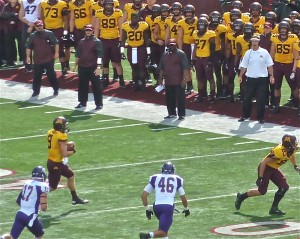
Gopher quarterback Phil Nelson ran toward the bench and coach Jerry Kill; both were gone by halftime.
Meanwhile, back to the second half. In his praise for the Gophers, Nielson said, “Their defense was so tough they pretty much took away our running game and forced us to throw the ball.”
That, I suggested, didn’t hurt Western, which had little success running the ball, while Norvell’s passing was clearly the best thing the Leathernecks had going. Despite a little coach-speak from Nielson, he acknowledged that he saw the chance to seize on Minnesota’s man-to-man coverage to spring a running back against a linebacker, and Norvell executed perfectly in the third quarter, firing a long, highlight-film pass down the middle of the field for a huge gain that put the Leathernecks in position to take the lead.
“The coaches did a great job of preparing us; all we had to do was execute,” said Norvell, who then connected for another highlight-film pass play to a leaping Lance Lenoir in the right edge of the end zone for a 12-7 lead. That one stunned the once-festive, sun-drenched Gopher fans into silence.

Lance Lenoir went up to catch Trent Norvell’s TD pass over Gopher defender Eric Murraty for a 12-7 lead.
Despite the final score, the chance for the upset ultimately came down to a highly unusual play. It was still 12-7 when Leidner drove the Gophers on a solid march to get inside the 5 for what seemed an inevitable touchdown to wrest the lead. But Leidner, trying a sneak, had the ball jolted out of his arm at the 3. The ball popped out and flew into the end zone. Kintzel, at linebacker, caught it and made an instaneous decision. He went for it.
Kintzel didn’t see the Gopher wide receiver, who nailed him as he came out across the goal line, dropping him at the Western 1. With no room to operate, quarterback Norvell tried his best, but could gain nothing. Western punted, but the no-room effort went only 17 yards, and the Gophers were able to slam their way right back in for the go-ahead touichdown.
Two more touchdowns in the fourth quarter put the game away. There was no second-guessing with Nielson, however. After he said he was proud his team had played such a challenging game, I had to ask a hypothetical question, as a means of underscoring how close his team was to springing the upset. “I’m always praise any player who sees the chance for a 103-yard touchdown run and goes for it,” I said. “And hindsight is always easy, but hypothetically, if he (Kintzel) drops down and takes a knee in the end zone, you would have had the ball at the 20. With a 12-7 lead, that might have won the game for you.”
Nielson calmly said: “That’s what happens in football. I have no quarrel with what Kevin did. That was an amazing turn of events down there. When you’re looking up and picking that ball off, you don’t know how deep you are in the end zone, and you have to make a quick decision. We went into the game wanting to be aggressive, and to try to win the football game.”
My question was intended to praise Kintzel, not to accuse him of any misplay.
“We knew it would be a battle,” Kintzel said. “The coaches put us in the right spot to pull this off, and I know they’re counting on me to make big plays. I thought I had an edge there but I can’t be dropping balls like that.”
Sure enough, Kinzel earlier had gone over to help a teammate on pass coverage, and when he leaped for the interception, the ball glanced off his hands and fell to the turf, with nothing but space between him and the end zone.
Still, if you’re a coach like Nielson, you want to have players who will take a chance, or two, on making a game-breaking play. In this case, Kintzel showed exactly that kind of aggressive confidence. He didn’t go all the way on either chance, and either one or both might have won the game. But surely neither cost Western Illinois the game.
Nielson praised Gopher coach Kill for resurrecting a Gopher program that was in ruins, and he said his hopes and prayers were with him for a speedy recovery from the seizure. It ruined what was otherwise a festive day at the stadium.
“What a great environment,” Nielson said. “It doesn’t matter if you’re playing before 42,000 fans or on a sandlot, it’s still the same game. But it was really a great opportunity for us to play in TCF Bank Stadium.”
Everybody enjoyed the exciting game with Goliath outlasting David. Except, maybe, the singular rude and classless Gopher fan among the 42,000 trying so desperately to insult the visitors afterward. It was just my bad luck to run into him after the game.
UMD VOLLEYBALL WORTHY OF NO. 1
It’s different to be the aggressor, chasing success if not perfection, and suddenly achieving it. UMD’s volleyball team will now demonstrate that if you do the former well enough, you then get a chance to do the latter.
The Bulldogs started the season ranked No. 4 in the nation in NCAA Division II women’s volleyball, and after a spectacular start, the Bulldogs rose to No. 1 and stand 9-0.
Last season, the Bulldogs chased No. 1 ranked Concordia all the way to the finish. They beat Concordia in one match, but fell short at playoff time. UMD had a powerful team, with several freshmen contributing, and several outstanding seniors, but it was Kate Lang rising above the net to blow powerful blasts past opposing blockers that was UMD’s chief threat.
With those seniors gone, coach Jim Boos has Lang, those year-older freshmen from last year, and a perfect blend to make a serious run at national honors.
“Certainly, being voted No. 1 might play an unforseen part in our players’ heads,” said Boos. “Now we’re at the precipice, after being No. 4 to start. But even at No. 4, we had a target on our backs. Ultimately that’s not going to change. I never put much stock in where we’re rated, but being No. 1 is nice, because it means we’ve accomplished something.”
Lang, from Hibbing, remains the dominant threat and the focal point of opposing blockers, and when the circumstances require it, she can be unstoppable. While the Bulldogs opened with two tournaments on the road, Lang recorded 33 kills in one match, then came back with only 12 the next day.
“The thing was, we had two or three players with 9 kills,” Boos said. “We’re much more balanced this year. We’ve matured a lot, and our setter, Ashley Hinch, who was honorable mention All-America as a freshman last year, has a much better idea of how to distribute the ball.
“Lang, of course, is not real vocal but she leads by doing. She plays the entire game — attacking, passing, blocking, passing, with her skill and experience. We rely on her in crunch moments.”
Boos came to UMD in 2002 after being an assistant coach at North Dakota State, a power in the North Central Conference. It was a good move, because UMD was moving into the NCC. It never gets routine, or easy, to run a major program, but Boos has found a comfortable way of operating.
“A culture has been created here,” he said, leaving out the fact that he created his own culture. “The circle repeats itself now. Kids come in and learn from others. It helps that I’ve had Kristen May as my assistant for 10 years, too. That helps me spend less time on little details. Everybody who we recruit knows they have to stay on their toes and keep improving, and that no matter how good they were in high school, it might take a year or two to crack the lineup.”
This season, the Bulldogs are so potent that there wasn’t a huge need for any freshmen to come in and be impact players.
“With three freshmen and two sophomores playing so well last year, among 12 returning players, we had no immediate need for freshmen to play big roles this year,” said Boos. “We have four freshmen on the team, but only one got into a game so far.”
UMD is riding an interesting crest right now, with football maintaining excellence — and facing a huge game against Minnesota State-Mankato Saturday at Malosky Stadium — and Division I men’s and women’s hockey continuing as strong contenders for league and national honors. But inside Romano Gym, the UMD volleyball team is forcing students and fans to take notice.
PONDER THE QUESTION
At last, Christian Ponder played like a competent NFL quarterback last Sunday. He must have, because all the critics in the Twin Cities were jumping up to blame both the Vikings offensive coordinator and defensive coordinator for the fact that the Vikings lost 31-30 in Chicago.
Strange, but when the same offensive coordinator called the shots as Ponder led the team into position for a late touchdown that would have clinched what was then a 3-point game, and when he called for Ponder to throw a pass into the end zone on second down, there was no accompanying order that Ponder miss his target that time. But when the third-down play was Adrian Peterson up the middle for no gain, the Vikings had to settle for a field goal and a 6-point lead, it was all finger-pointing time.
The lead didn’t last because Jay Cutler brought the Bears back for a late touchdown pass, which set the same critics off to blame the defensive coordinator. Only the players got it right, saying profoundly that when the coordinator calls the play, it’s still up to them to execute and make it effective.
In Ponder’s case, my only curious thought is whether or not he is allowed to call audibles when he comes up to the line and sees the planned play heading for trouble and maybe the defense is giving something else. Sure, I would have liked to see Peterson run wide with a pitchout, instead of trying to crack a rugged Bear defensive line.
But consider in both cases, had either Ponder’s second-down pass or Peterson’s third-down plunge been successful, the same critics would have raved about how great they were, and the offensive and defensive coordinators would have remained nameless.
Incidentally, San Diego didn’t play fair, keeping the ball impressively away from the Philadelphia Eagles and beating coach Chip Kelly’s hurry-up offense. Interestingly, while watching Denver and the New York Giants in the Manning on Manning duel, Denver dominated and won. Payton Manning called no-huddle plays and took immediate snaps all game in his own personal version of the hurry-up style.
How many times have you watched a defensive struggle football game suddenly flare to life in the closing minutes because the quarterback and offense switched to a no-huddle, hurry-up offense. It almost always works better than what had been a wearisome slowpoke offense until then. I’ve always wondered why teams in the NFL didn’t try more hurry-up, 2-minute drill game plans. Chip Kelly proved it can work, now we’ll have to watch to see how many teams give it a try.
Tundra Revises Look, Features for 2014
By John Gilbert
After years of passing every test thrown at it, Toyota would like to reverse roles with the Tundra — asking competitors to pass the same tests, and consumers to consider testing the redesigned 2014 Tundra when shopping for a new half-ton pickup.
Toyota isn’t making any outrageous claims for its new Tundra, avoiding the hype that dominates the ad campaigns of competitors in the most brand-loyal segment. Toyota also stops short of trying to steal customers from F-150s, Silverados or Rams, but merely asks such half-ton pickup buyers to test the the Tundra for whatever criteria is important to them.
Through its life, the Tundra started off too small, and has since been accused of being not rugged enough, and/or too fancy. The last major renovation, in 2007, seemed to solve the criticisms, and for 2014, the new Tundra has a focus on refinement, chiseling a more aggressive exterior, and using mostly soft-touch and luxury touches to refine the interior. Improving the interior appearance is interesting, because the creature comforts of the first Tundra caused me to define it as the Lexus of pickup trucks, and it has inspired the competition to drastically upgrade their interior amenities.
A bolder look and stance sets the new Tundra apart from the current model, and while the truck continues with the same powertrains that is more an affirmation that its powerful array of high-tech engines is already substantial enough to take on the improved power of the competition.
When it comes to the perpetual tests the half-ton pickup players always face, Chris Gomez, chief product planner for Toyota’s large trucks, said he is both curious and amused at the lavish claims made for towing as Tundra competitors seemingly escalate their limits to claim the highest number, while Toyota prefers to pass the approved standards.
“In the half-ton pickup segment, we have something called the ‘SAE J-2807’ for towing standards,” said Gomez. “All truck manufacturers were at the table when we agreed on the tests and methods. The tests are done on a 12-degree grade, measuring acceleration, minimum speed, cooling system, braking distance, transmission locks, and every other characteristic, all done with a load, and in over 100-degree heat, to see how every component will function, and what its failure points might be.
“While everyone agreed on five primary tests and minimum requirements, Toyota is the only one that passed all the tests. None of the others meet the J-2807 standards, and Toyota has adhered to them since they were adopted in 2011.” Read more
Football, Football, Everywhere
By John Gilbert
The start of the National Football League season dominated the sports news over the weekend, and some thoroughly entertaining games deserved the spotlight. By chance, I had to catch a flight from Minneapolis to Los Angeles for an assignment to attend the introduction of the new Ram turbodiesel pickup, and the stunning new Jeep Cherokee for my alter-ego job as automotive journalist (Newcarpicks.com), so I only got to see the first half of the Vikings game at Detroit.
I had picked against our two regional favorites — the Vikings and the Green Bay Packers at San Francisco. The Packers, because I thought they’d be good, but San Francisco is one of the premier teams in the NFL. Sure enough, it was a shootout, with Chris Kaepernick coming out on top of Aaron Rodgers this time, just as he did when the 49ers beat the Packers at the end of last season. The Vikings, because I remain unconvinced that Christian Ponder has gained enough polish by not playing through the exhibition season, and because I think Detroit and Matt Stafford are for real, particularly by adding Reggie Bush to the rushing game.
The first half was amazing, as the Vikings took a 14-13 lead and were indeed fortunate to be ahead. Adrian Peterson raced 76 yards for a touchdown on the first play of the new season, but Ponder struggled so much after that the Lions were able to focus on Peterson and hold him to only 20 more yards on 17 more carries in the game. The Lions used up their usual allotment of bad luck and bad breaks in the first half, scoring three touchdowns before getting credit for one. A couple of weird calls there, too.
By rule, if a player puts the ball over the goal line it’s a touchdown, for breaking the plane of the goal line. Also, any ball-carrier who has possession when he goes down is credited with possession if the ball is jarred loose by the rule that “the ground can’t cause a fumble.” The new rule in the NFL also says that a receiver must complete the act of receiving by keeping possession when the ball hits the ground. So Stafford hits big Calvin Johnson with a pass, and as Johnson is being hauled down at the goal line, he reaches the ball over the goal line to be sure it’s a touchdown. As he lands, the ball is jarred loose, and after review, the officials overturned the call of a touchdown and ruled the pass incomplete. The Lions had to settle for a field goal and trailed 14-6. One thought: The trendy move to reach the ball over the goal line might be better served if the ball-carrier thrusts the ball over the goal line, breaking the plane, then pulls it back. There’s no need to “down” the ball anymore, I don’t think.
At any rate, the Lions intercepted passes and ran them back for touchdowns, and made several more big plays, only to have them nullified by penalties. Then they tried a goal-line plunge, and the Detroit back appeared to get right onto the goal line before being hurled back. It was not called a touchdown, until further review, as they say. Then, to the surprise of anyone who has seen a Vikings-Lions game in the last two decades, the call was reversed, and the Lions were granted the touchdown that made it 14-13.
As I boarded the plane, I thought to myself that if the breaks evened out, the Lions were in position to take the game over in the second half, and when I got to L.A., I learned they had indeed.
DUCKS, AND EAGLES, FLY
For the last three years, my favorite college football team to watch — after UMD, of course — were the Oregon Ducks. Coach Chip Kelly’s incredible hurry-up offense, with no huddles and immediate snap after snap, was geared to prevent defenses from every getting set or having any chance of anticipating what might be coming next. I firmly believe that if the Ducks played Alabama in the last two Bowl Championship Series games, they would have one at least one of the two. At least.
This year, the landscape changes. Chip Kelly is now coaching the Philadelphia Eagles, and the Ducks are left with a new coach and a superb lineup. A big problem is they play out West, and news seems to travel slowly to the big media centers in the East, including ESPN, which does a great service by bringing us a lot of football every Saturday, but does the sport a huge disservice by having a contract to broadcast and promote the Southeast Conference and the Atlantic Coast Conference. They claim that nobody can touch the top SEC teams, and the sheep that vote for the ratings follow along as if on cue.
My feeling is that nobody, not Alabama, nor any other college team, could contain Oregon’s rapid-fire attack for an entire game, but mostly I found few others who agreed, mainly because everybody had watched Alabama’s pro-style offense and pro-style defense and assumed the Crimson Tide was as good as ESPN kept claiming.
With considerable interest, I watched Oregon play at Virginia last Saturday afternoon. But I missed the first couple minutes of the game, and by the time I tuned in, the Ducks were scoring an impressive touchdown to take a 14-0 lead. They went on to rock Virginia, in front of astonished East Coast viewers and ESPN broadcasters, 59-10. Even without coach Chip Kelly, the Ducks were awesome. Quarterback Marcus Mariota, a sophomore Heisman Trophy candidate, handed the ball off on the familiar quick-strike offense, and every once in a while he’d keep the ball himself, fire passes to an array of skilled receivers, or run himself for a couple of touchdowns. De’Anthony Thomas, Oregon’s prize running back, scored three touchdowns as well.
This Saturday, No. 2 ranked Oregon (behind Alabama, naturally) plays Tennessee, another huge game for the Ducks, to say nothing of the Volunteers. The big game of the week, of course, is the rematch of the upset of last year when Alabama plays at Texas A & M. If you can, watch both those games, and watch A & M’s Johnny Manziel closely, but also watch Marcus Mariota closely. Then next week we can compare them.
With the impressions of Saturday’s college games still swirling in my mind, and the information overload from Sunday’s NFL slate, I watched the first half of Monday night’s Philadelphia Eagles game at Washington. The defending division champ Redskins were favored, with the return of Robert Griffin III from knee surgery after last season, but my interest was focused on the Eagles, where Chip Kelly has moved his hurry-up offense into an NFL where everybody hopes he fails.
Every NFL team plays virtually the same offensive system and the same defensive system. Nobody has changed anything in the NFL for two decades or more. Chip Kelly has promised to do that, and quarterback Michael Vick must think he’s in heaven. Kelly has gotten the Redskins to buy into his plan, where every move of practice, every lifestyle move leading up to games and through games, is done in rapid-fire fashion. Critics said it would never work in the pros. I disagreed, but from a distance.
Jon Gruden was the color commentator on the broadcast, and he was in awe of what the Eagles did. I read once where the actual timed average of an NFL game shows 6 seconds of action, followed by 30 seconds of huddle, then 6 more seconds of action. Perfect for instant replays and all those commercials. Vick and the Eagles averaged a play every 5 seconds.
The all-time record for running plays in an NFL game is something like 93. The Eagles ran 30 plays in the first quarter, and had 53 by halftime. First game problems with getting the system sharpened saw some mistakes, and some missed passes by Vick that prevented the Eagles from blowing the Redskins off their home field. Washington, in fact, scored first after Vick botched a lateral pass on first and goal at the Washington 4, which ultimately became a 75-yard fumble recovery touchdown by Ryan Kerrigan. The Eagles never broke stride. After a field goal, Vick threw a 25-yard touchdown bullet to DeSean Jackson, one of seven passes Jackson caught for 104 yards, then the Eagles got a safety when their defense swarmed the Redskins, for a 12-7 first-quarter lead.
The remarkable thing about the game was that the big Redskins crowd was stunned into silence. They watched in amazement as the Eagles ran no-huddle snap after snap, leaving no time for replays or commercials, and they obviously were comfortable playing at a tempo that was too quick for the wearying Redskins to cope with, let alone gather their thoughts.
In the second quarter, Vick fired a 28-yard touchdown pass to Brent Celek, then he faked a handoff and ran one in himself. At halftime, Philadelphia led 26-7, and it should have been much worse; the Eagles had 21 first downs to 2 for the Redskins. Vick sent LeSean McCoy slashing through holes in the Redskins line, and part of the 184 yards McCoy collected on 31 rushes was a 34-yard touchdown run to make it 33-7 late in the third quarter. Vick gained 54 more yards on his own runs, while clicking on 15 of 25 passes for 180 more.
To their credit, the Redskins came back to score the last three touchdowns in the game to close it to the 33-27 final with a minute left. Griffin wound up with 30-49 passes for a whopping 329 yards, but 169 of the yards came in the fourth quarter, long after the Eagles had put the game away. And Griffin was intercepted twice, for the first time in his career.
But the game was never in doubt. Nor was the feeling that NFL fans all across the country had just witnessed a potential changing of the standard style in how to play football. This is not to say that the Eagles will romp undefeated through the season. Undoubtedly, some team will find a way to outscore them, but there is no question that while San Francisco and Seattle both play a somewhat similar style, and a few other teams may try it now, no other team is conditioned and primed physically and mentally to play the game at the incredible tempo of the Eagles.
NEW-IDENTITY BULLDOGS, SAME RESULT
It was evident from the start of Minnesota-Duluth’s opening football game that this year’s Bulldogs will establish their own identity. They will have to, because even though a lot of the names in the lineup are familiar, we all became comfortable identifying the last four highly successful UMD teams by the names of coach Bob Nielson and quarterback Chase Vogler.
Obviously, UMD’s great teams of the past four seasons, including the NCAA Division II championship outfit of 2010, were directed by Nielson’s fine hand, and by the dynamic and creative play-calling of Vogler. Whether those two got too much credit or not, both are gone now, Vogler to graduation after a record-setting four years, and Nielson to Western Illinois for the challenge of Division I.
We all knew that, but when the Bulldogs opened the season against a definite challenge from Sioux Falls last Saturday night, somehow we still expected a resemblance to those Bulldogs past. There was a resemblance from the outcome, a 32-7 victory for UMD, and there was the start of a new era in Bulldog football, with coach Todd Wiese stepping up from offensive coordinator to head coach, despite looking young enough to still be in the lineup. And Drew Bauer stepping into the signal-calling role as a freshman quarterback, and while he wasn’t the swashbuckling Vogler already, he ran the club with poise, passing and sending his quick-strike running backs through the Cougar line to build a 19-0 first half lead.
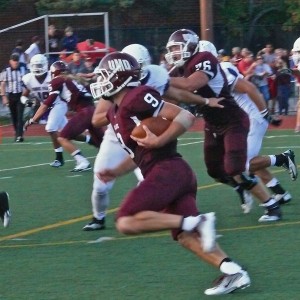
UMD’s freshman quarterback Drew Bauer swept left end for a 15-yard touchdown and a 19-0 lead over Sioux Falls.
The first half scoring concluded when Bauer carried himself, swinging around left end and running the last 15 yards for a touchdown that boosted the Bulldogs from a shaky 13-0 lead to 19-0 control. When Bauer came out in the third quarter for treatment of leg cramps on the warm September night, sophomore Eric Kline came in and promptly fired a touchdown pass to Zach Zweifel after a Sioux Falls touchdown had lessened the UMD lead to 25-7.
Zweifel is one of those returnees who played so well last season. So is Austin Sikorski, who ran for two touchdowns. And so are defensive stalwarts like defensive end Chris Vandervest, linebacker Colby Ring, and cornerback Kenny Chowa. When the offense got too much credit last season, the defense didn’t seem to mind being overlooked, but they seem certain not to be overlooked this season. Vandervest was a force throughout the game, while Ring has one sack, and jarred a fumble loose and recovered it, while Chowa snatched an interception, as the Bulldogs generally prevented Sioux Falls from ever getting into the game with a dominant first half and a solid game throughout. Vandervest had five unassisted tackles, one for a sack, in the first half alone, when UMD had 15 first downs to 5 for the Cougars. For the game, Vandervest had 8 unassisted tackles, while sophomore linebacker Nate Zibolski had 5 unassisted and 1 assistd tackle.
“Vandervest is a senior now, and he played like a senior tonight,” said Wiese, on the Malosky Stadium turf after the game. “Our defense was consistent all night, both our defensive front and our secondary. Our secondary played as good as we’ve seen, and we forced them out of any game plan they had.”
As for the offense, Wiese was more than satisfied with Bauer. “Drew did a good job and was extremely composed at the line of scrimmage,” Wiese said. “I’m proud of the way the guys came out, both at the start of the game, and in the second half. We expect a lot out of our guys.”
Along with the 19-0 halftime score, UMD had established its rushing superiority by halftime, gaining 157 yards on 30 rushing attempts, while stifling Sioux Falls with 5 yards on 18 tries. Fumbles, interceptions and penalties aided UMD aggressive defense in keeping the Cougars — who were 9-2 last season — off balance. Still, freshman Luke Papilion overcame five sacks and constant harrassment to make the Cougar passing game a threat.
There were some odd plays, and calls, as the officials looked like they might be suffering more from first-game rustiness than the players. On UMD’s first drive, Bauer appeared to complete a pass to a diving receiver up the left sideline, and while photos indicated it was a catch, the officials ruled it incomplete. However, Sioux Falls was called for pass interference on the play, so all that was hurt was UMD’s statistical advantage. A couple plays later, Sikorski barged 19 yards up the middle and it was 7-0 anyway.
The Cougars attempted to keep pace, but Papilion fumbled after being sacked and UMD recovered. An interception and another fumble recovery stopped the next two Sioux Falls possessions, too, in the 10-0 first quarter.
A dizzying sequence in the third quarter also kept the big crowd of 5,217 guessing. UMD came up with another key interception near the goal line, but it was nullified by a pass interference call. Sioux Falls promptly scored a touchdown, but it was disallowed because of an illegal block. Next, UMD was called for a pass interference in the end zone, and finally Sioux Falls was able to come up with its touchdown.
None of that affected the final outcome, because the Bulldog defense helped UMD to a whopping edge in rushing yards, 275-11, and in rushing first downs, 18-2. Papilion’s passing gave the Cougars a 133-106 edge, but UMD sacked him five times and compiled a 381-144 margin in total yards. Sikorski slashed through for 104 yards on 24 carries, and Logan Lauters added 80 more yards on 15 carries, while Bauer chipped in 58 yards during 10 carries — some of them intentional.
It seemed as though the post-game wind-down lasted longer than usual, and maybe it did, as the coaching staff and players savored the long-awaited answer to the questions of how the new staff and a new quarterback would succeed when the new season started. But if it was to be savored, even the celebration was measured.
“We’ll enjoy this one for 24 hours — that’s a team rule,” said Wiese. “Then we start thinking about next week.”
The Bulldogs are on the road this weekend, returning home the following Saturday. By then, the new identity should be more firmly in place, and the only thing remaining from the old identity is winning.
New 1.8 Turbo Steals VW’s Base
By John Gilbert
ST. HELENA, CALIF. — The best thing Volkswagen is bringing to its lineup for the 2014 model year is more than skin deep — a new base engine for its whole car line. The best thing Volkswagen may bring to the U.S. for 2015 is the sportiest car in its whole lineup, a secret weapon that’s been sold only in Europe — the Scirocco.
Those were the main disclosures Volkswagen officials made to members of the automotive media, gathered at the Meadow Wood Resort near St. Helena, a small town in the heart of the Napa Valley wine-growing region north of San Francisco.
The engine is the hottest news. Volkswagen for years has stayed with a series of high-tech engines for its full line of vehicles, with a 2.5-liter 5-cylinder as its base engine, and upgrades that include a 2.0 TSi (turbocharged) 4-cylinder, and a 2.0 TDI (turbo diesel), with spot duty for a venerable V6 engine known as the VR-6.
Curiously, while the 2.5 is the largest-displacement engine in the basic Beetle, Golf, Jetta, and Passat, it also is the dullest engine in the fleet, because the 2.0 turbo has a lot more pizzaz and potential fuel economy, while the 2.0 TDi has remarkable torque and can get up to and beyond 50 miles per gallon of diesel fuel.
For 2014, Volkswagen is introducing a new 1.8-liter TSi 4-cylinder, which is remarkably engineered to coordinate less power into a lighter package but, with direct injection and turbocharging, make the little engine feel like a much larger displacement unit. A smaller derivative of the 2.0 TSi, the 1.8 Turbo feels quick and potent all the way up the RPM scale, and it also delivers better fuel economy on regular fuel, unlike the 2.0-turbo gas engine.
“The 1.8-TSi is built out of all-new architecture,” said Mark Trahan, the executive vice president of group quality for all Volkswagen and Audi vehicles. “It has all the latest technology, including direct injection, low-friction parts, and the exhaust manifold is designed right into the cylinder head. It has 170 horsepower and 184 foot-pounds of torque, and while that torque is 30 foot-pounds less than the 2.0 Turbo, the torque peaks at 1,500 RPMs.”
It is torque, and not horsepower, that gives a car brisk acceleration, and the new 1.8 Turbo proves that it doesn’t matter if it doesn’t have a lot of torque, as long as that torque all comes in when it’s most needed. In a car like the Jetta, the 1.8 hits peak torque at 1,500 RPMs, which is barely above idle speed, and it stays on a torque curve that is almost entirely flat all the way to the horsepower peak.
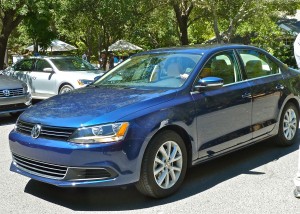
Compact Jetta will be among first to use the new 1.8 TSi engine with 170 horsepower and 184 foot-pounds of torque.
After driving several other VW models from Meadow Woods around the area roadways, I signed out a new Jetta with the new 1.8. When I hit second gear with the 6-speed stick, the car had so much mid-range punch that my first thought was that I’d mistakenly taken a turbo-diesel model. The turbo-diesel has so much torque at start-up that it rivals the hotter GTI/GLI sports models, and that’s the way the Jetta felt. But instead of the tubro-diesel, the Jetta had the new and plenty zippy 1.8-liter turbocharged gasoline 4-cylinder . VW has gone to fewer cylinders and smaller displacement to find a far superior engine. Read more


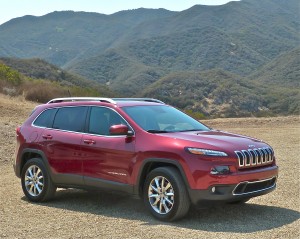

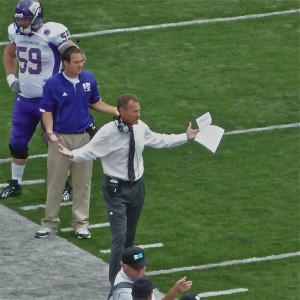
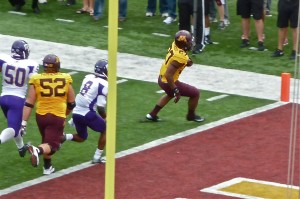
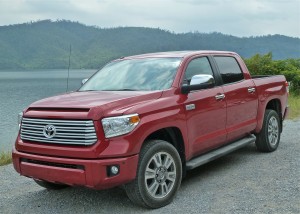
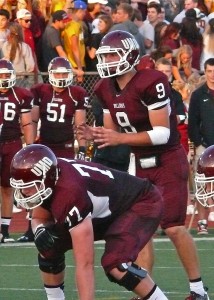
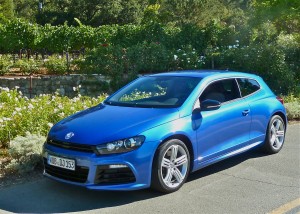
 John Gilbert is a lifetime Minnesotan and career journalist, specializing in cars and sports during and since spending 30 years at the Minneapolis Tribune, now the Star Tribune. More recently, he has continued translating the high-tech world of autos and sharing his passionate insights as a freelance writer/photographer/broadcaster. A member of the prestigious North American Car and Truck of the Year jury since 1993. John can be heard Monday-Friday from 9-11am on 610 KDAL(www.kdal610.com) on the "John Gilbert Show," and writes a column in the Duluth Reader.
John Gilbert is a lifetime Minnesotan and career journalist, specializing in cars and sports during and since spending 30 years at the Minneapolis Tribune, now the Star Tribune. More recently, he has continued translating the high-tech world of autos and sharing his passionate insights as a freelance writer/photographer/broadcaster. A member of the prestigious North American Car and Truck of the Year jury since 1993. John can be heard Monday-Friday from 9-11am on 610 KDAL(www.kdal610.com) on the "John Gilbert Show," and writes a column in the Duluth Reader.